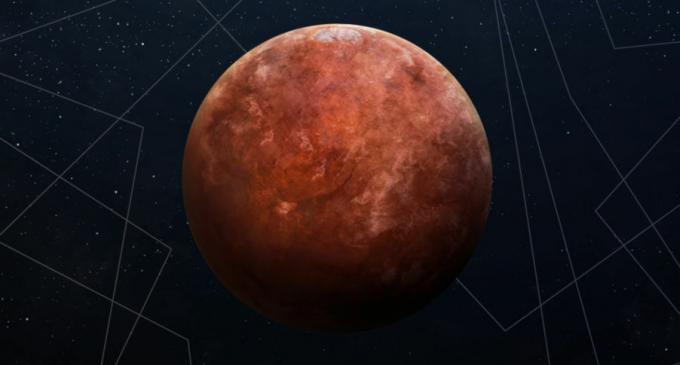Jupiteris the biggest planet in Solar system, being situated between Mars and Saturn. Its size gives it several natural satellites orbiting around it, about 70. During the night, this planet can be seen with the naked eye, being the second brightest star, behind only Venus, the second planet in order using the Sun as reference.
Read too: What are exoplanets?
Jupiter General Data
Equatorial Diameter: 142.984 km
Surface area: 6.14x1010 km2
Pasta: 1,899x1027 kg
distance from the sun: 778.330,000 km
natural satellites: Jupiter is estimated to have between 60 and 70 known satellites. Four were dubbed the Galilean Moons, as they were discovered in 1610 by Galileo Galilei. Ganymede, Callisto, Io and Europa are their names. The first is a little bigger than Mercury, and the other three are similar to our Moon.
rotation period: approximately 10 hours
translation period: approximately 12 years
Average temperature: -121,1 °Ç
atmospheric composition: Jupiter's atmosphere is basically composed of two gases: 86% of
hydrogen and 14% of helium. There is, in a very small way, the presence of methane, ammonia, water vapor and hydrogen sulphide.

meaning of jupiter
Almost all the planets in the Solar System are named after gods in Roman mythology, which is very similar to Greek mythology. For the Romans, the god Jupiter would be the god of gods, as ZeusO it's for the greeks, and son of Saturn, who would be Kronos in Greece.
Jupiter is named for being the greatest of the planets and what, in a way, reigns over others.
Do not stop now... There's more after the advertising ;)
Jupiter Characteristics
Jupiter's features are colossal and impressive just like the planet itself. Among the visible features, we can highlight the colored clouds that hover on the surface. Such coloring is atmospheric composition result (hydrogen and helium) and the intense storms that occur, with winds up to 600 km/hour. The most famous cloud has been dubbed the Red Spot, so large that it is able to cover the entire Earth.
These storms are common on Jupiter due to him being a gas planet and have the atmosphere with lots of hydrogen. Studies show that some storms last for hours, others can last for centuries, being fatal to humans.

Omagnetic field of Jupiter is much stronger than Earth's. This fact can help us understand the large number of natural satellites in its orbit.
The internal structure of the planet is still unknown. Studies point to a solid and rocky core, or even ice, which would explain the immense gravitational force of that planet. Around the core, we have the mantle, which has dense metallic hydrogen. Probe-based studies lead us to believe that the temperature at the core-mantle boundary is 35,000 °C.
Going to the surface, we have a mixture of liquid and gaseous hydrogen, which extends from the clouds (which can be seen) to approximately 1000 kilometers deep.
See too: 8 fun facts about the Solar System
Rings of Jupiter
Jupiter also has rings. are not like the ones from Saturn, which is the great exponent of this planetary feature, but were observed by probes that visited the giant of the Solar System.
Discovered by the Voyager 1 spacecraft in 1979, Jupiter's rings are composed of cosmic dust that orbits the planet. Due to its magnitude, this dust around the planet becomes fragile and thin, not being visible from great distances. They are dark rings with small rock particles. By comparison, Saturn's rings are made of ice, so they radiate light and can be seen from afar.
Scientists point out that Jupiter's rings are graduates per collisions of meteors on the planet's natural satellites, especially on the Galilean Moons. When there are collisions, fragments of the satellites are ejected and attracted by Jupiter's enormous gravitational force, entering its orbit.
Trivia about Jupiter
Let's see some fun facts about the largest planet in the Solar System.
If we lived on Jupiter, we would have our 12th birthday every 12 years, the planet's translation time.
The day on Jupiter is 10 hours long.
Europa, one of the Galilean Moons, may have a liquid ocean on its surface.
Winds of 600 km/hour are common on Jupiter.
Jupiter's mass is 2.5 times greater than the other seven planets in the Solar System combined. A giant.
If Jupiter's interior were hollow, 1300 Earths would fit inside it.
It's a gas planet, like Saturn, Uranus and Neptune.
Jupiter has the highest rotation speed among the planets in the Solar System.
The gravitational force on Jupiter is 22.9 m/s², while on Earth this force is 9.8 m/s².
Since the 1970s, seven probes have visited Jupiter:
- Pioneer 10 (1973)
- Pioneer 11 (1974)
- Voyager 1 and Voyager 2 (1979)
- Galileo (1995)
- New Horizons and Cassini (2000s)
By Attila Matthias
Geography teacher
Would you like to reference this text in a school or academic work? Look:
MATIAS, Attila. "Jupiter"; Brazil School. Available in: https://brasilescola.uol.com.br/geografia/jupiter.htm. Accessed on June 27, 2021.



